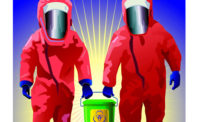Oklahoma Governor Mary Fallin has signed a bill into law that requires school districts throughout the state to provide training on workplace safety and health to students in grades 7 through 12.
The National Institute for Occupational Safety and Health (NIOSH) will partner with the Oklahoma Department of Labor and Department of Education to disseminate the information using the Oklahoma version of the NIOSH Youth@Work-Talking Safety curriculum.
The development is a result of a NIOSH initiative to begin raising workplace safety and health awareness at a young age.
Why so young?
More than 80 percent of teens work while in high school and most, according to NIOSH, are unprepared for the hazards they face on the job. Statistics bear this out: young people are twice as likely as those over 25 to get hurt at work.
“Research indicates that schools are one particularly effective locus for the delivery of vital workplace safety and health skills,” said NIOSH chief Dr. John Howard. To this end, NIOSH has integrated the Core Competencies into its free curriculum for middle and high schools, which is customized for all U.S. states and territories to reflect local child labor laws and resources and is aligned with current educational standards.
Fun and easy
“Talking Safety is a fun and easy tool for teachers to use in preparing their students for a lifetime of safe and healthy work,” said Howard.
Talking Safety was first designed almost two decades ago by NIOSH and its partners, including the Labor Occupational Health Program at the University of California/Berkeley, the Massachusetts Department of Public Health, and the Education Development Center Inc. Stakeholders across the country have since championed it and continue to be important partners in its dissemination and diffusion.
Miami-Dade County Public Schools (M-DCPS), the nation’s fourth largest school system, was the first school system in the nation to adopt the Talking Safety curriculum and has built life skills for safe and healthy work into the mandatory content to be covered in all eight-grade science classes—which will reach approximately 17,000 teens each year.




